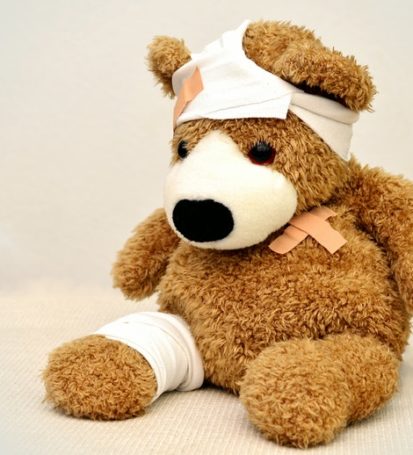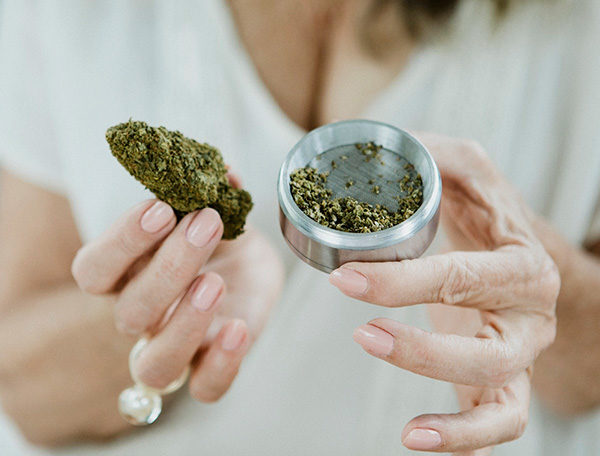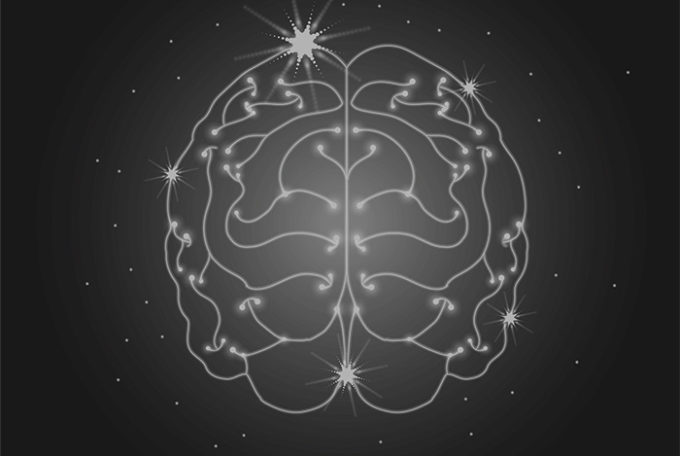Traumatic brain injuries are often caused by a violent jolt to the head or body, leading to dysfunction of the brain. The aftermath can be severe and life-altering, with continued damaging effects even after the initial incident. Cannabis use may improve the quality of life in subjects who have sustained a traumatic brain injury by retaining skills and increasing cognitive function.
What Is a Traumatic Brain Injury?
The penetration of brain tissue or damage from a sudden blow, jolt, or head injury can often cause traumatic brain injuries. These injuries can affect nearly every aspect of the human body by obstructing the functions of a healthy brain. There are roughly 52,000 deaths each year caused by traumatic brain injuries and another 80,000 who face severe disability. Children and older adults are especially prone to injury; however, everyone is at risk. In the United States alone, there are more than 5.3 million people who live with traumatic brain injury disabilities.
Physicians categorize traumatic brain injuries by mild, moderate, and severe damage with a wide range of psychical and psychological effects. Minor injuries like concussions can sometimes only cause short-term dysfunction. In these types of cases, damage to the brain happens at the point of impact. Serious injuries can lead to permanent dysfunction and even death. Long-term damage is usually caused by bruising, tissue tearing, brain bleeds, or other similar injuries. In these severe cases, the brain can violently move around inside the skull. This scenario can lead to cell damage, bleeding, and swelling throughout the brain and cause further injuries.
Following the traumatic event, the human body releases toxic chemicals that often cause additional complications. The continued damage that occurs can be devastating for the patient, even if they survive the initial blow.
Symptoms of a Traumatic Brain Injury
Based on the severity and location of the brain injury, symptoms can vary significantly and affect physical, sensory, and cognitive functions. Some signs may appear immediately after the injury while others may appear days or weeks later.
The symptoms of a mild traumatic brain injury may include:
• Loss of consciousness
• Being dazed or disoriented
• Dizziness or balance difficulties
• Headaches
• Nausea or vomiting
• Drowsiness or increase in sleeping
• Sleep disruptions
• Blurred vision
• Ringing in the ears
• Changes to the sense of smell
• Memory problems
• Difficulty concentrating
• Changes in mood
• Depression
• Anxiety
Moderate to severe traumatic brain injuries can include any of the signs associated with a mild injury, as well as the following symptoms.
• Any symptoms associated with mild traumatic brain injury
• Loss of consciousness lasting minutes to hours
• Persistent or worsening headache
• Continued nausea or vomiting
• Seizures
• Pupil dilation in one or both eyes
• Clear fluid coming from the nose or ears
• Difficulty waking up
• Weakness in toes and fingers
• Numbness in toes and fingers
• Coordination difficulties
• Extreme confusion
• Agitation
• Combativeness
• Slurring of speech
• Coma
It can be especially challenging to spot a traumatic brain injury in children, particularly infants and young children who cannot verbally communicate their symptoms. In a child who sustained a traumatic brain injury, one might observe the following signs.
• Changes in eating
• Continuous crying
• Excessive irritability
• Difference in sleep
• Change in mood, particularly sadness or depression
• No interest in favorite things, such as toys or books
Depending on the injury, symptoms may appear immediately following the event. In other cases, they may appear hours or even days after the initial impact. Continued monitoring is crucial whenever one endures a head injury.
Those who have endured a traumatic brain injury may face potentially severe complications, including:
• Prolonged change to consciousness, such as a coma, vegetative state or brain death
• Seizures
• A build-up of spinal fluid in the brain
• Infection when the cause is a skull fracture or a penetrating injury
• Damage to blood vessels resulting in a stroke or blood clots
• Nerve damage
• Cognitive problems
• Communication difficulty
• Behavioral changes, including outbursts, decreased self-control and risky behavior
• Emotional changes
• Degenerative brain diseases, such as Alzheimer’s, Parkinson’s, or dementia
The majority of traumatic brain injuries require immediate medical attention to stabilize and asses the situation. Doctors must be able to acquire as much information about the injury as possible to minimize any further damage. Imaging technology such as CT scans and MRIs can help doctors locate the brain damage, evaluate its severity, and determine their course of action.
Conventional Treatments for Traumatic Brain Injury
Depending on the severity of the traumatic brain injury, the treatment plan can vary greatly. Patients with mild cases may not need any medical care at all. For other mild cases, doctors might recommend pain relievers, monitoring symptoms at home, along with bed rest to allow time to recover.
Emergency care is typically required after sustaining a moderate to severe traumatic brain injury. Medical staff must initially stabilize the patient and check their vitals. To prevent further damage, controlling any inflammation or bleeding is required. Once the patient is stable, doctors must develop an individual treatment plan to assist the patient with any short-term and long-term effects that the injury may have caused.
The immediate and ongoing treatment options often include a variety of therapies. Those may include medications, surgery, and rehabilitation. The operation focuses on repairing or minimizing the damage caused by the injury. This may involve removing hematomas, repairing skull fractures, or making a hole in the skull to allow room for swelling.
Medications commonly used to treat traumatic brain injury may include:
Diuretics: Traumatic brain injuries often cause increased pressure inside the brain. Diuretics can help eliminate some of that extra fluid to reduce the pressure and minimize damage to the brain tissue.
Anti-seizure medications: Seizures are a risk after a traumatic brain injury. Some patients may receive anti-seizure medications immediately following the injury to prevent potential seizures, which can cause additional brain damage. After the first week, anti-seizure medications are typically only used if the patient has seizures.
Coma-inducing drugs: In some cases, the patient receives coma-inducing drugs. Putting the patient in a temporary coma helps because the brain needs less oxygen in that state. This is particularly helpful if having difficulty providing enough oxygen to the brain.
A rehabilitation program is typically recommended in the treatment plan to teach necessary skills, increase cognitive function, and assist with daily activities. Frequently patients must undergo several different types of therapies at once.
Some people involved in the rehab may include:
Occupational therapists to teach necessary skills for day-to-day activities
Physical therapists to work on mobility and balance to regain walking ability
Speech and language pathologists to improve communication skills
Neuropsychologists to address cognitive impairment
Social workers to coordinate services throughout the rehab process
Vocational counselors to discuss the return to work or professional options after the injury
 Why Medical Marijuana for Traumatic Brain Injury Can Be Effective
Why Medical Marijuana for Traumatic Brain Injury Can Be Effective
After sustaining a traumatic brain injury, the human body releases toxic chemicals that can inhibit further damage to the brain. Excitotoxicity, oxidative stress, and inflammation can lead to neural death even after the patient stabilizes. Some researchers suggest that the use of medical marijuana could help minimize any secondary brain damage because of the plant’s natural protective qualities in the neural system.
The human body has a biological endocannabinoid system made up of endocannabinoids, which are neurotransmitters that bind to cannabinoid receptors. The cannabinoids in medical marijuana interact with those receptors and may block the release of cytokines after an injury, which causes inflammation. The cannabinoids found in medical marijuana may also allow the body to produce minocycline to minimize swelling and neurological impairment.
Cannabis is a plant that consists of two cannabinoids: tetrahydrocannabinol (THC) and cannabidiol (CBD). THC is the compound that creates the signature “high” feeling that marijuana is known for producing. CBD, however, is a non-psychoactive cannabinoid, meaning it does not have the same intoxicating effect as THC and may be useful in treating a traumatic brain injury. It also offers other benefits such as neuroprotective, anti-anxiety, and anti-inflammatory properties.
A research study performed on piglets with brain injuries has shown reduced excitotoxicity, oxidative stress, and inflammation when treated with CBD. A similar study demonstrated significant reductions in brain swelling in mice with brain injuries.
Research conducted by Professor Yosef Sarne at Tel Aviv University found a positive correlation between cannabis use and traumatic brain injuries. The analysis revealed that cannabinoids administered shortly before or one to three days after the injury could help protect brain cells from damage and adverse long-term effects on cognitive functions. The cannabinoids seemed to initiate the biochemical reaction that produces a protective effect in the brain.
Supporting Dr. Sarne’s research, studies have shown that people with detectable levels of THC in their body at the time of a traumatic injury were less likely to sustain fatal damage in comparison to those who did not.
Marijuana also has other benefits that reduce some of the symptoms of traumatic brain injury, including:
Decreased nausea: Marijuana is known to minimize nausea, which is sometimes an effect of a traumatic brain injury.
Improvements in depression: Another benefit of marijuana is the potential for helping depression. Traumatic brain injury can cause depression and anxiety. Using medical marijuana may help ease those symptoms.
Increased appetite: Traumatic brain injuries can cause a change in appetite and eating habits. Marijuana is known to increase appetite, which can help you eat more if the damage caused a loss of appetite.
Improved mood: Another possible effect of a traumatic brain injury is a change in mood. Many users experience enhanced spirit with the use of marijuana.
Better sleep: If the traumatic brain injury interferes with your sleep, marijuana may help. Cannabis often creates a sleepy effect and helps people overcome insomnia. Indica strains, in particular, help with sleep problems.
Due to federal regulations that limit research on cannabis use and traumatic brain injury, scientists have faced significant challenges in obtaining the cannabinoids needed to conduct their work. To supplement the lack of scientific research done in the U.S., many have shared anecdotal evidence of success in treating traumatic brain injury with medical marijuana.
Treatment Using Medical Cannabis for Traumatic Brain Injury
There are many different strains of medical marijuana available for qualifying patients, all varying in their ratio of THC to CBD. Depending on the specific type of injury, an authorized medical marijuana practitioner can assist in deciding which strain is best suited for the situation. Research has seen a positive effect on brain injuries from both THC and CBD, but some studies have shown CBD to have a more significant impact during treatment. Because of these findings, choosing a strain of medical marijuana with a higher concentration of CBD may provide the most significant benefits.
Cannabis strains are categorized as Sativa-dominant or Indica-dominant. Sativa is known for creating an energizing effect, while Indica induces relaxation. Users can find strains that have higher concentrations of CBD in both types.
The consumption method is another factor when determining a treatment plan.
Smoking: When you smoke marijuana, the plant gets heated to the point of combustion to release the cannabinoids. You feel the effects right away. However, smoking does create byproducts that can cause issues in the lungs. For this reason, smoking may not be the preferred method for people with traumatic brain injuries.
Vaporizing: An alternative to smoking is vaping marijuana. Individual vaporizing machines heat cannabis to a lower temperature than smoking. Vaping releases fewer byproducts than tobacco, but it still gives you almost immediate effects.
Edibles: Another option for ingesting marijuana is an edible product. You can choose from a range of foods infused with cannabis, including popcorn, cookies, ice cream, and other foods. The benefit of oral consumption is long-lasting effects. Edibles take 30 minutes to a few hours to take full effect, but those effects last much longer than smoking or vaping.
Side Effects of Using Marijuana
Patients have found cannabis use to have a significant positive impact while managing the side effects of their traumatic brain injury. However, it’s important to note that cannabis does have some side effects. While those side effects are often mild, knowing what to expect helps you prepare for them.
Some common effects of marijuana include:
A “high” sensation
Increased appetite
Sleepiness
Dry mouth
Short-term memory difficulties
Giddiness
Cannabis users often find many of these side effects to be positive when managing their symptoms. Those with insomnia can benefit from the drowsiness effect that is caused by some strains and can lead to an improved quality of sleep. Increased appetite can assist those who suffer from eating disorders, loss of appetite caused by other medications, etc. Additionally, many cannabis users simply enjoy the “high” sensation.
Have you or a loved one been affected by a traumatic brain injury and its side effects? Medical cannabis may help alleviate symptoms. Our goal is to provide a better quality of life to our patients with an alternative to lab-produced pharmaceuticals. We properly educate and train our patients, so they receive the absolute optimal outcomes with Florida medical cannabis. As a therapeutic health clinic, we believe the choice to approach health and wellness naturally is an important one.


 Why Medical Marijuana for Traumatic Brain Injury Can Be Effective
Why Medical Marijuana for Traumatic Brain Injury Can Be Effective

